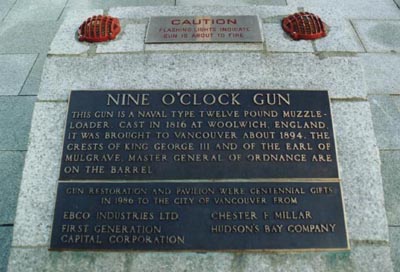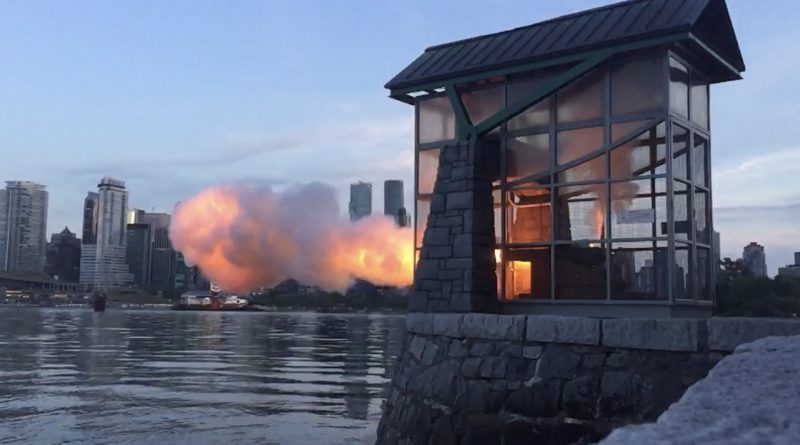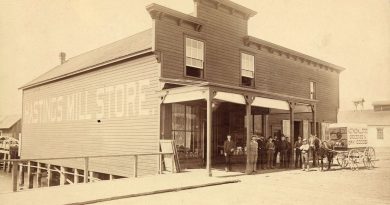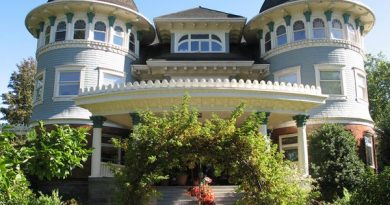Vancouver’s Nine O’Clock Gun
It’s been hit by lightning, plugged with rocks, short-circuited, silenced by work stoppages and even (briefly) stolen but Vancouver’s famed old Nine O’Clock Gun has—as faithfully as circumstances have allowed—boomed out the time of day from its home in Stanley Park for 107 years now.
The early life of this famed 12-pounder muzzle-loaded naval cannon is vaguely known. Thanks to an inscription on the gun itself, we know it was made by H & C King in 1816, the year after Waterloo. It’s numbered DCLVII (657).
A royal cipher, lower on the barrel, tells us King George III was the monarch when the gun was made (although George had been insane for some years and the Prince of Wales was acting as regent) and we can also see the letter M, a monogram for the Earl of Mulgrave, Master General of Ordinance at the time.
Many of the clippings mention it was made in the Royal Gun Factory at Woolwich, a London borough, but I’ve been unable to find a connection between the H & C King inscription and the Woolwich factory (which still exists and is known as the Royal Arsenal).
The cannon was more than 70 years old before it ever got to Vancouver. What had it been doing all that time? Probably poking out of the side of a British ship, but there’s no record of what ship, or where the ship served. Back around 1816, most of Britain’s troubles seemed to be happening inside its own borders … but India was being subdued and maybe the gun saw service there.
We do know that, in 1856, the British government gave 16 cannon to the “provinces of Canada” (Confederation was still 11 years away), that at least three of those cannon got to the Pacific coast after a long trip around the Horn, and that two of them ended up flanking the entrance to the legislative buildings in Victoria. (Those two were melted down in 1940 as part of the war effort—after all, each of them weighed 1,500 pounds or 680 kg.)
The third and surviving cannon is our old friend, the Nine o’Clock Gun.

Image: Wikipedia
It was sent first to Nanaimo, where local coal miners had been made jumpy by the local native people. I’ve seen no indication that it was ever used in anger but it wouldn’t be surprising to learn that it was fired off now and then just to impress anyone who might have aggressive notions.
The gun next turns up in Esquimalt as a result of the British argument with the United States over the placement of the international border. Then, the threat of trouble with the Yanks having passed, in 1898 gun No. 657 was installed in Stanley Park. It was first fired October 5, 1898. (We got that date from a newspaper of the time.)
There was, apparently, a time when a dynamite explosion was set off daily at 9 p.m. in the park as “an aid to navigation.” William D. Jones, the lighthouse keeper at Brockton Point was, it is said, required to detonate a charge of dynamite at that time. In 1922 Jones described using an “exaggerated fishing rod” to dangle the explosives and detonator over the water. We confess to not understanding how an explosion at 9:00 p.m., in the dark, could act as “an aid to navigation.”
Why was the cannon set up in the park? The usual explanation is that it was originally installed by the federal department of fisheries to be shot off at 6 p.m. to alert salmon fishermen in the harbor that it was closing time for fishing.
Some variants of that add it was used for that reason on Sundays only. Then, the story continues, as fishermen moved farther out of the harbor in pursuit of fish, the use of the gun for signalling the fishing curfew became an anachronism, but it was decided to retain the gun as a time signal with the boom re-scheduled to 9 p.m.
Until we researched this story, that’s the version we would have given you if you’d asked. Now we’re not so sure.
Here’s an excerpt from a January, 1939 interview the late city archivist, Major J.S. Matthews, had with pioneer Herbert McDonald. Matthews is speaking:
“. . . imagine Vancouver as it was: No lights, no telephones, no conveniences. There wasn’t a house south of Robson and from there to the Fraser River was bush. One thing they did have was a volunteer fire department and on top of the firehouse there was the usual fire bell. That was the only means of checking the time, for it was rung at 8 a.m., noon, one and 6 p.m. every day.
“There were two objections to the bell: One was you couldn’t hear it very far and the other was that, if the bell-ringer didn’t count straight and rang it twice instead of the usual once, the whole town would be packing the family heirlooms in a blanket ready to evacuate before another fire . . . two rings meant fire and after their first experience (in 1886) that was the one thing those early pioneers feared most. [The reference is to the Great Fire of June 13, 1886 that destroyed the city.]
“Then, too, the ships in the harbor had no means of checking their time and, as Victoria had a gun that was fired at noon for the purpose of regulating ships’ chronometers, ship captains asked for one here.”
There’s no mention by Matthews or McDonald of a salmon-fishing curfew. Frustratingly, there’s also no clear indication that the gun was installed as a replacement for the four-times-a-day firehouse time signal. Still, that’s the obvious implication of the Matthews remarks.
Today, more than 100 years after its arrival in Stanley Park, with frequent exceptions that we’ll outline in the future, the Nine O’Clock Gun booms out its nightly message—a message heard at Granville and Hastings five seconds after nine o’clock, in Marpole 30 seconds after that, in New Westminster a full minute after nine and in Mission (it’s been heard there more than once) more than three minutes after nine.
It’s fired electrically these days, and flashing red lights warn passers-by of the imminent blast.
Norfolk, Virginia has a Nine O’Clock Gun, also used for timing purposes.



